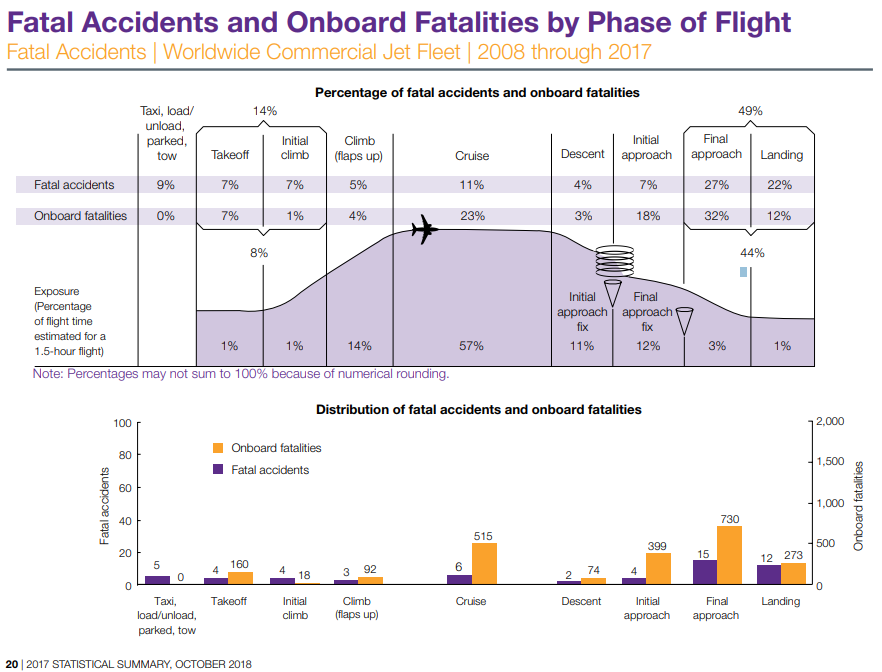A devastating plane crash left 157 dead Sunday, including 18 Canadians, when Ethiopian Airlines Flight ET302 plunged into a field in the African country.

It’s one of the deadliest plane crashes in recent history. The plane came down moments after takeoff, which experts say is the second most dangerous section of a flight, after landing.
The plane was headed to Nairobi, which is the location of a UN Environment Assembly event. Nineteen UN workers were killed in the crash.
The flight took off at 8:38 a.m. local time — or 5:38 a.m. UTC — from Bole International Airport in Ethiopia’s capital, Addis Ababa, according to flight data from Flight Radar 24.
Weather was generally good: visibility was excellent and wind speed was about 10 knots.
WATCH: Eighteen Canadians among 157 killed in Ethiopia plane crash

The plane climbed to 8,600 feet before data stopped being sent from the plane three minutes later.
The vertical speed — basically, how fast the plane was rising (or falling) — was erratic, according to flight data. The plane rose for 10 seconds before levelling off and then rose again. At 8:39 a.m., the plane dipped and rose a couple times, losing a few hundred feet in altitude on both occasions.
Data was only available until 8:41 a.m.
The pilot issued a distress call and was told to return to the airport.
READ MORE: Mother and daughter, climate change activist identified as victims in Ethiopian Airlines crash
Officials say they lost contact with the plane at 8:44 a.m., six minutes after it took off.

Get breaking National news
The plane crashed about 50 kilometres southeast in a field near the town of Bishoftu.
Two witnesses told Reuters they saw trailing smoke and heard a strange sound before the plane came down.
Malka Galato, the farmer on whose land the plane crashed, told Reuters he saw small items that looked like paper coming from the plane. The plane was making a strange noise and made a sudden turn just before it crashed, he said.
The plane tried to climb before it made a sharp turn and came down, Tamirat Abera, another farmer, added.
The plane’s black box and cockpit voice recorder were recovered. Ethiopian officials are investigating the cause of the crash.
WATCH: Global News coverage of the Ethiopian Airlines crash
Takeoff and landing among the most dangerous
“We know the majority of accidents happen about 15 or 20 miles from an airport,” said retired aviation safety analyst Jock Williams.
“Landing and taking off are the dangerous phases because that’s where something is happening,” he explained. “When you’re sitting up at 40,000 feet, you may be going 500 miles an hour, but that’s not dangerous, you’re not going to hit something.”
Williams reassured anyone flying that pilots are trained to handle things that come up during takeoff and landing.
- Police ‘naturally’ recover poached Fabergé egg swallowed by suspected thief
- Family of Colombian man killed in U.S. boat strike alleges murder, files complaint
- U.S. military kills 4 alleged ‘narco-terrorists’ in another boat strike
- U.S. Supreme Court allows Texas to use redrawn voting map, favouring GOP
According to statistics compiled by Boeing, the most common time for accidents is during the final approach and landing. Forty-nine per cent of fatal accidents occur during these two phases, which, in 2017, amounted to 1,030 deaths.
Takeoff and the initial climb amounted for 14 per cent of fatal accidents, or 186 deaths.
Cruising accounted for 11 per cent of fatal accidents, but planes spend more time cruising than they do in takeoff and landing.
Former U.S Air Force command pilot Tom Farrier told Forbes that takeoff used to be more dangerous, but new benchmarks were created to let pilots know when the plane could safely take off with either one or two operational engines.
The Ethiopian Airlines flight crashed about 50 kilometres from the airport; it had passed the takeoff stage and was climbing.
In this case, the erratic vertical speed could indicate the pilot had trouble with the controls.
“The only reason an airplane goes up and down is what I’ve described to you. We call that a pilot oscillation — or, in many cases, a pilot-induced oscillation — because the pilot is fighting the controls. The controls are saying, ‘This is what I want to do,’ the pilot is saying, ‘No, this is what I want to do,’ and never the twain shall meet,” Williams explained.
WATCH: China orders its airlines to ground Boeing 737 MAX 8 jets

The crash on Sunday drew comparisons to another fatal crash involving the same aircraft model. In October 2018, a Boeing 737 MAX 8 operated by Indonesia’s Lion Air crashed into the ocean, killing 189 people.
Investigators in that crash are looking into the plane’s automated system, which kicks in if sensors indicate that a plane is about to lose lift. They are checking whether a faulty sensor may have caused the plane to lower its nose automatically against the pilot’s wishes.
Many airlines have since grounded their entire fleet of Boeing 737 MAX 8s. Transportation Minister Marc Garneau said Monday that Canada is not mandating the grounding of the aircraft; there are 41 currently being used by airlines WestJet, Air Canada and Sunwing Airlines.















Comments